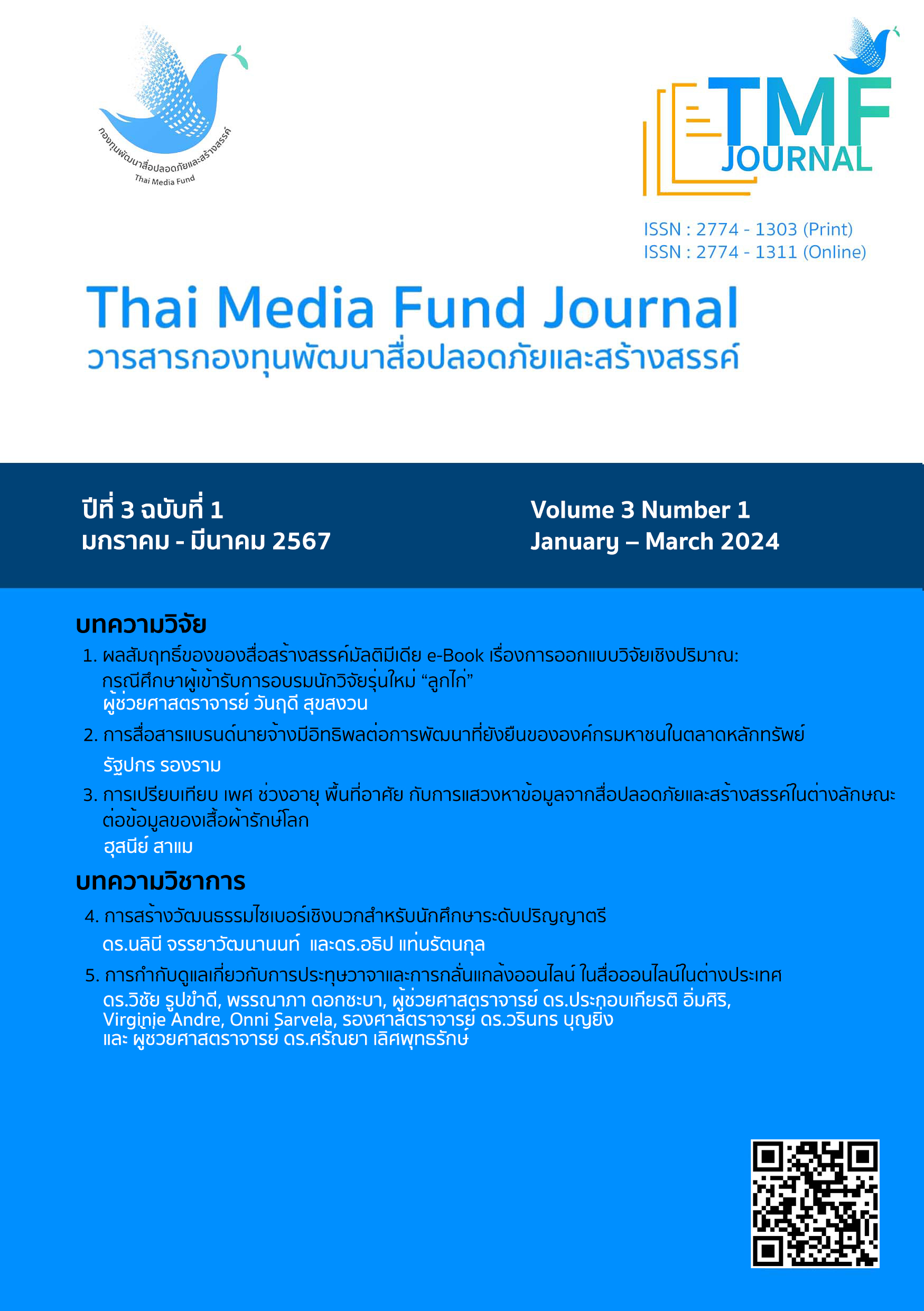Current Regulatory Regarding Hate Speech and Cyberbullying Online in Foreign Countries. -
Main Article Content
Abstract
Problems of hate speech and cyberbullying varies from country to country. The issue of hate speech and cyberbullying in online media has grown to such an extent that it has resulted in genocide, violence, and the violation of human rights. Despite being a nation that upholds freedom of speech, internet media communication needs to be regulated. Good practice development and ethical standards can be achieved with the cooperation of the media content creators, online media platform provider and other relevant sectors in the online communication ecosystem. Alliances must be formed to prevent and counteract potential verbal violence and online bullying, which will be more effective than retaliating through law enforcement alone.
Article Details

This work is licensed under a Creative Commons Attribution-NonCommercial-NoDerivatives 4.0 International License.
References
Asia Centre. (2020). Hate speech in Southeast Asia new forms, old rules. Retrieved from file:///C:/Users/User/Downloads/Hate-Speech-in-Southeast-Asia-New-Forms-Old-Rules1.docx%20(1).pdf
Council on Foreign Relations. (2019). Hate speech on social media: Global comparisons. Retrieved from https://www.cfr.org/backgrounder/hate-speech-social-media-global-comparisons
eMORE. (2016). eMORE: MOnitoring and REporting online hate speech in Europe. Retrieved from https://www.mirovni-institut.si/en/projects/emore-monitoring-and-reporting-online-hate-speech-in-europe/
Henares-Montiel, J., Benítez-Hidalgo, V., Ruiz-Pérez, I., Pastor-Moreno, G., & Rodríguez-Barranco, M. (2022). Cyberbullying and associated factors in member countries of the European Union: A systematic review and meta-analysis of studies with representative population samples. International Journal of Environmental Research and Public Health, 19, 1-13.
Iginio, G., Danit, G., Thiago, A., & Gabriela, M. (2015). Countering online hate speech. Retrieved from https://unesdoc.unesco.org/ark:/48223/pf0000233231
Kid Stop Press. (2022). Shocking: Indian kids are the most cyberbullied in the world. Retrieved from https://kidsstoppress.com/shocking-indian-kids-are-the-most-cyberbullied-in-the-world/
New York Tim. (2018). Facebook fueled anti-refugee attacks in Germany, new research suggests. Retrieved from https://www.nytimes.com/2018/08/21/world/europe/facebook-refugee-attacks-germany.html
New York Time. (2018). In Sri Lanka, facebook contends with shutdown after mob violence. Retrieved from https://www.nytimes.com/2018/03/08/technology/sri-lanka-facebook-shutdown.html.
Office of National Statistics. (2020). Online bullying in England and Wales: Year ending March 2020. Retrieved from file:///C:/Users/USER/Downloads/Online%20bullying%20in%20England%20and%20Wales%20year%20ending%20March%202020.pdf
Petrov, C. (2022). 50 alarming cyberbullying statistics to know in 2022. Retrieved from https://techjury.net/blog/cyberbullying-statistics/#gref
Statista Research Department. (2022). Most common platforms for cyberbullying in Europe 2018. Retrieved from https://www.statista.com/statistics/941005/europe-most-common-platforms-for-cyberbullying/
The Print. (2022). 85% Indian kids have experienced cyberbullying, highest in the world, finds new survey. Retrieved from https://theprint.in/india/85-indian-kids-have-experienced-cyberbullying-highest-in-the-world-finds-new-survey/1074175/
The Washington Post. (2018). How online hate turns into real-life violence. Retrieved from https://www.washingtonpost.com/nation/2018/11/30/how-online-hate-speech-is-fueling-real-life-violence/
VOA. (2022). US big city hate crimes spiked by 39% in 2021, report finds. Retrieved from https://www.voanews.com/a/us-big-city-hate-crimes-spiked-by-39-in-2021-report-finds-/6571116.html

